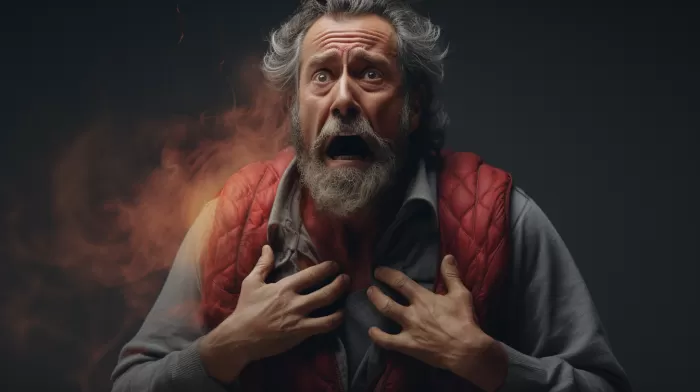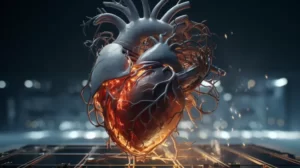A heart attack can be a life or death situation, and acting quickly can mean the difference between a full recovery and lifelong impairment, or even worse, death. To take action, one needs to understand the signs and symptoms of heart attacks and strokes. Let’s dive deeper so you can be prepared and know what to look for in case you or someone near you experiences such an emergency.
Signs of a Heart Attack
A heart attack doesn’t always involve extreme chest pain like we see in movies. It can manifest in various ways, targeting both men and women. Familiarizing yourself with the following symptoms will help you recognize when someone is having a heart attack:
- Upper abdominal pain or upper back pain – more common in women.
- Shortness of breath.
- Dizziness or lightheadedness.
- Pain or numbness in the left shoulder, arm, or even the jaw.
- Chest discomfort (heaviness, tightness, squeezing, burning, pressure).
- Palpitations – heart beating fast or irregularly.
- A tight throat or a lump in the throat.
- Breaking out in a cold sweat.
- Nausea and vomiting.
- A sense of impending doom or anxiety.
- Weakness or fatigue.
- Intensity of symptoms increasing over several minutes.
Remember that pain is not exacerbated when pressing on the chest or taking a deep breath, unlike other causes of chest pain.
Symptoms of a Stroke
A stroke usually has a more sudden onset than a heart attack, and its symptoms are related to the area of the brain that has been damaged. The severity and variety of symptoms can change from person to person but be watchful for these:
- Hemiplegia – sudden weakness on one side of the face or body.
- Numbness or loss of sensation.
- Changes in smell, taste, hearing, or vision.
- Facial muscle drooping or weakness, including eye movement.
- Difficulty swallowing.
- Weak neck muscles or tongue muscles.
- Balance issues, difficulty walking, or dizziness.
- Changes in breathing or heart rate.
- Language difficulties – speaking or understanding (aphasia).
- Memory loss or confusion.
What to Do When Faced with These Symptoms
Heart attacks affect more than a million Americans every year, causing death in almost half of all cases. Another 800,000 people experience strokes, leading to 150,000 deaths annually. Recognizing these signs is critical for survival and limiting long-term damage.
Do not wait to see if symptoms improve before seeking help. Time is of the essence. Call 911 or your local emergency number and describe the symptoms. If you are with someone experiencing a possible heart attack or stroke, keep them as calm and still as possible while waiting for help to arrive.
Preventing Heart Attack and Stroke
While being prepared for emergencies is essential, taking steps to maintain a healthy lifestyle can help prevent heart attacks and strokes. The American Heart Association suggests the following practices:
- Maintain a healthy diet. Include a variety of fruits, vegetables, whole grains, lean proteins, and healthy fats in your daily intake. Limit saturated and trans fats, added sugars, and sodium.
- Be physically active. Aim for at least 150 minutes of moderate exercise or 75 minutes of vigorous exercise every week.
- Maintain a healthy weight. Obesity is a significant risk factor for heart attacks and strokes. Calculate your Body Mass Index (BMI) to assess whether you fall within a healthy range.
- Don’t smoke. Smoking is a leading cause of preventable deaths, associated with various heart and lung diseases. If you smoke, look for programs or treatments to help you quit.
- Limit alcohol consumption. Excessive alcohol intake can raise blood pressure and increase the risk of heart disease. Stick to one drink per day for women and no more than two for men.
- Manage stress. Constant stress can contribute to high blood pressure and other risk factors. Learn relaxation strategies and find healthy ways to cope with stress.
- Control existing medical conditions. If you have high blood pressure, high cholesterol, or diabetes, work with your healthcare provider to manage and control these conditions.
By adopting a lifestyle that prioritizes your heart’s health, you can significantly reduce your risk of experiencing a heart attack or stroke – and with the knowledge of how to identify their symptoms, you’ll be prepared in case of an emergency.



